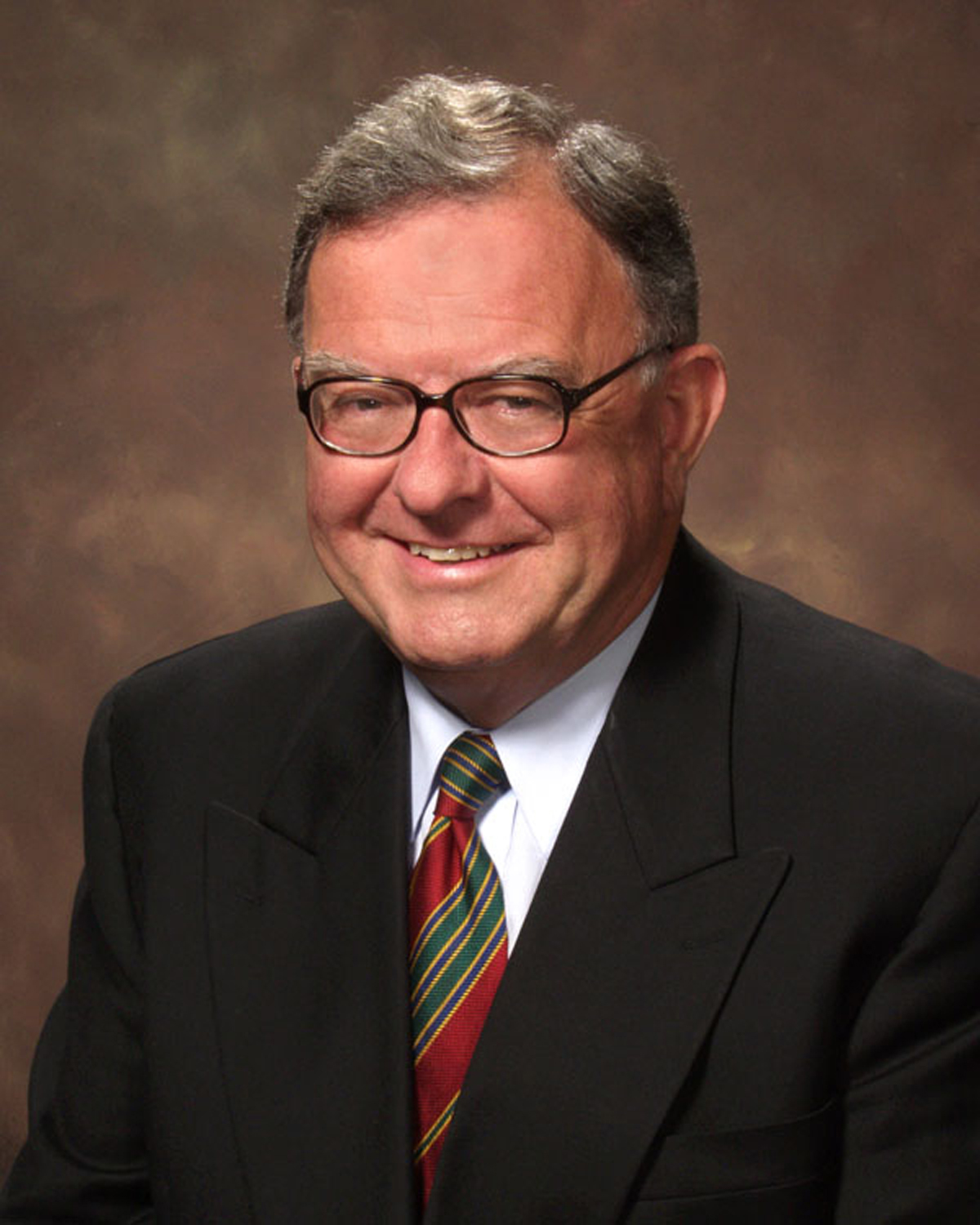By Karen Di Piazza
Not since 1964, when the Learjet 23 model was produced, has any startup aircraft been FAA-certified as a production business jet; but that’s all about to change. Manufacturers of the emerging VLJ market are all startup companies except Wichita-based Cessna Aircraft Company. OEMs of the VLJ are of course, very competitive in nature—and guarding propriety information is paramount to their success—but they can’t even agree on what the light jet should be named.
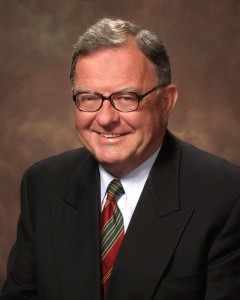
Tom Appleton, president of Piaggio America Inc., responds to allegations that parent company Piaggio Aero Industries doesn’t have enough parts inventory in the U.S.
Jack Pelton, CEO and president of Cessna Aircraft, favors “entry-level jets,” while Rick Adam, CEO of Adam Aircraft Industries, prefers “personal jets,” and Vern Raburn, CEO of Eclipse Aviation likes “very light lights.” However, since insurers have been referring to them simply as “VLJs,” for “very light jets,” OEMs have now used the same term, maybe because one of the only things they can agree on is there’s no derogatory connotation.
They all agree on one other thing. Microjet, minijets, babyjet, compact-jet or Barbie-jet are names to avoid. Adam said he’s not particularly fond of the term “microjet” because the “public doesn’t like getting in small planes, thinking they’re not safe.”
Aside from the jubilance of the tiniest milestones met by OEMs who are producing the VLJs, or what ultimate decision the industry arrives at on nomenclature, it’s the insurance puppeteers that are calling the shots. They will decide who will or won’t be insurable, which is the hottest issue facing OEMs, owner/operators and Part 135 charter operators.
Opening Pandora’s box
William Welbourn, executive vice president for United States Aviation Underwriters Inc., said the company would be analyzing key aspects in determining whether insuring these new aircraft would be a good risk. Areas of concern include pilot experience level, pilot training, product support, durability and airspace. However, the VLJ is a new product, and he said the “jury’s still out” on what kind of coverage will be available.
In simple form, all insurers are leery, but not until now have some of them agreed to lift the lid on Pandora’s box and address issues openly.
Senior underwriter Ann Thickey, from Global Aerospace, one of the world’s largest aviation insurers, warns OEMs that numerous pilots who have put down deposits for a VLJ will be told in the end they don’t have enough flight hours, training or type ratings—regardless of what OEMs try to convince them.
“A lot of pilots are going to realize that they’ve been drinking their own bath water, but for those who haven’t yet put deposits down, they could prevent disappointment if they contact an insurance agent to find out if they’re qualified,” she said. “All of the manufacturers claim they’re building the most efficient, most durable and most insurable VLJ—regardless of the fact that many of them haven’t progressed past a design sketched on paper.”
W. Brown & Associates Insurance, headquartered in Irvine, Calif., the underwriting arm for XL Insurance Specialty, anticipates taking a very cautious approach underwriting VLJs. Scott Brown, the company’s president, believes the idea perpetuated by OEMs that “simply producing a VLJ, then presto, anyone can fly them, is a disservice.”
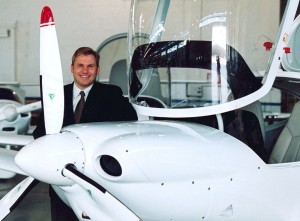
Peter Maurer, North American president of Diamond Jet Aircraft Industries, believes the D-JET, a five-place, single-engine turbofan jet, is the way to go.
“Press releases on OEMs’ websites or fanfare gathered from air shows may whet the appetite of pilots, but we don’t plan to underwrite anyone’s VLJ until one year after production,” he said. “I mean the plane has to have been flying for one year. Cessna’s Mustang is the exception, but that’s with a six-month cautionary period at this point. Most OEMs are only focused on Federal Aviation Administration certification and deposits. They’re missing the big picture; aircraft won’t be insured until OEMs provide the insurance industry with solid training programs.
“We need to see what the training program is one year before aircraft delivery. Most VLJ manufacturers aren’t openly discussing training programs because they don’t have one, yet some manufacturers claim they are just around the corner of certification and delivery.”
He added that the other eight insurers in the U.S. agreed with the premise that OEMs were selling the idea that obtaining insurance was something “insignificant at point of sale, but would be an easy, quick and painless process down the road.”
All insurers agreed that Cessna, which has a long history of successfully bringing products to market, were not only viewed as safe, but are viewed as very insurable—especially in recent years with its family of Citation Jets. In making that determination, insurers agree that OEMs of the VLJ need to offer jet training akin to Cessna; full-motion, level D simulator training, currently provided by Cessna’s training partner FlightSafety International, is the standard they are seeking.
Movie producer Sydney Pollack, who is type-rated in his Citation X, and who went through jet training with FlightSafety recently, said, “No matter what type of jet you’re flying, full-motion level D sim training is crucial.”
“Those guys really know what they’re doing, and I can’t imagine flying my Citation without having had training like that,” he said.
However, in the case of the Mustang, Cessna isn’t sure if FlightSafety will win the bid for training. But according to Pelton, “Someone will be providing that same level of training.”
“It’s everything; we’ve never downplayed that fact,” he said, adding that being able to provide a parts inventory would play a key role in the eyes of insurers for the VLJs.
He’s right. Cessna is one of the few companies that provides parts for aircraft they no longer produce, and that’s part of the reason underwriters will insure the Mustang, although they haven’t seen Cessna’s training syllabus on the Mustang.
Within the scope of insurability
Insurers agreed that without the OEMs ability to provide inventory of spare parts, it would jeopardize the durability of aircraft, thus, it could make it more difficult for owner/operators or for Part 135 operators to obtain reasonable insurance rates.
“History has shown us that planes have been certified by the FAA, but in many cases, after the plane has been flying for a few years, the OEM has gone out of business,” said Ernest De Spain, a senior underwriter for Brown. “Because of this, we’re looking beyond the plane, scrutinizing a company’s product support history. It’s going to be a problem for startup OEMs. For example, here in the U.S., the twin turboprop Piaggio 180 only has about $3 million worth of inventory, and that’s a problem; it tells me they only have inventory here that doesn’t cover the value of one aircraft. That’s a problem when you have 40 aircraft flying around and one or more become damaged.”
He said it’s a bigger problem if aircraft have to return to a foreign manufacturer for repair.
“There’s no way to monitor the status of repairs in cases such as that,” he said. “At that point, the manufacturer’s goal is to get new production out the door; they’re not going to stop, pull people off of a production line and fix that one plane. We even have problems with older Piper aircraft; they have support, but a diminishing supply of surplus parts. When this happens, it creates a lag in service, thus it’s more costly for insurance.”
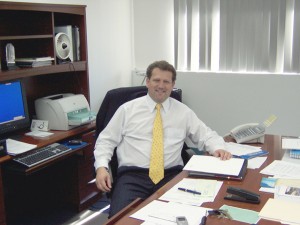
Camilo Salomon, president and CEO of Miami-based Safire Aircraft Company, said although the company is still looking for investors, they are moving ahead with producing the six-place, all-metal twinjet.
Piaggio America Inc., the U.S. and Canadian arm of its Genoa, Italy-based parent, Piaggio Aero, completely disagrees with De Spain’s risk analysis on parts availability.
“Yes, it’s true that our current parts inventory in the U.S. is about $3 million, but so what,” says Piaggio America CEO Tom Appleton. “That’s the most ridiculous, absurd comment I’ve heard; Global Aerospace insures our aircraft. In fact, because of our excellent safety record on the P180s in the U.S., insurance rates have dropped! Has De Spain heard the terms same-day-delivery, U.P.S. or overnight FedEx, easily accessed through the Internet? I think having $3 million in inventory in the U.S. is more than adequate.”
However, something else to consider about the Piaggio Avanti, which has a worldwide fleet of 76 aircraft, 23 more than in 2002, is the fact that it’s jet-like, which the company says is competition for the VLJ in the air-taxi market. The Avanti’s maximum cruise altitude of FL410, and cruise speed of 395 knots, is 14 knots faster than the Citation CJ1—only eight knots slower than a Citation Bravo.
But Avanti has 50 orders in the pipeline inclusive of U.S. fractional sales, and with the next available delivery not available until 2007, the price from 2004 dollars at $5.495 million, is $6.2 million. Because the aircraft will be flown more, it’s one of the reasons De Spain is concerned; the value of the aircraft is doubled from the amount of available inventory parts, if they only have $3 million worth. However, De Spain and Thickey both agree that as far as pilot training for aircraft such as the Piaggio, it’s easier for pilots to obtain insurance because it’s not technically in the jet category.
Thickey said not only was the VLJ a “new genre,” but because they were going to be used for air taxis, it “called for new and stringent guidelines.” She said Global would actually require OEMs to “show them the money,” proving they can service products.
“We know where Cessna’s backing comes from, but who is backing these startups?” she asked.
Are insurers too uptight?
Some insurance brokerage firms believe that insurers are being too harsh on startup OEMs. Doug Johnson, president of Georgia-based Insuramerica Aviation, Inc., said in today’s world, you can get anything in about three days via U.P.S.
“You can order a part via the Internet or by phone, but insurers are really worried if parts actually exist,” he said. “Insurance underwriters are concerned about new OEMs depending upon unheard of suppliers coming from Poland and Russia, but Boeing, Cessna and most OEMs have been going outside of the U.S. for years.
“We have 200,000 aircraft flying today in the U.S.; that’s inclusive of a Boeing down to a little Cessna 150, and most of our aircraft are 25 years old. We have a universal problem of dwindling parts inventory. We have to go outside of the U.S. for parts.”
Bill Behan, CEO and president of Colorado-based AirSure Limited, described some underwriters’ lists of must haves as “something they should mail to Santa Claus.”
“They can ask for anything, but that doesn’t mean underwriters won’t insure pilots,” he said. “Because the VLJ is new, and they’re convinced only low-hour pilots will try to fly them without proper training, they’re playing hardball doing their best to intimidate everyone. As for the Piaggio or the Pilatus, when so-called inventory problems have come into question, I’ve still been very successful in obtaining insurance for pilots who fly these aircraft. This is a bunch of nonsense.”
Could insurance cost for VLJs?
De Spain said insuring a VLJ could be much higher initially than what’s currently being quoted for larger, existing jets—simply because they’re an unknown.
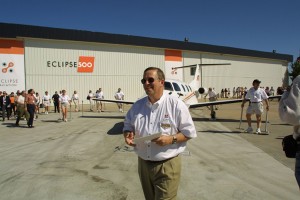
Vern Raburn, founder and CEO of Eclipse Aviation, said the company’s training program is top notch—without full-motion simulators.
“Initially, insurance for a VLJ valued at approximately $1.2 million could cost the pilot about $35,000 annually, but that would only cover physical damage,” he said. “You’d have to add another $5,000 or $7,500 annually to have a basic liability binder with a million-dollar limit. However, those numbers could double for Part 135 operators; the aircraft used as an air taxi would be used more, so liability will be more expensive.”
He said the dot-com era was to blame for higher insurance rates that were quoted for today’s pilots flying a VLJ.
“When those rich dot-comers purchased expensive aircraft, whether it was pistons, cabin-class twins or turboprops, they found out they couldn’t get insurance, because they were low-hour, unqualified pilots,” he said. “They believed they were entitled to fly the aircraft because they were rich enough to buy them; the insurance industry proved that was untrue. The same thing is going to happen with these VLJs, because the individuals purchasing them may believe, despite knowing they are low-hour pilots, they can move into the jet easily and quickly. This may be true as far as the OEMs and the FAA is concerned, but underwriters are going to say ‘no’ and put a stop to it.”
Thickey agreed with De Spain, but added that there isn’t a law requiring any pilot to purchase aircraft insurance.
“There are numerous wealthy, but uninsured pilots flying in our skies right now,” she warned. “There are even Part 135 operators that have been known not to insure entire aircraft fleets. Some charter operators have ‘switched’ insured aircraft for uninsured aircraft. Make sure the tail number of each plane, for each leg flown, is documented, and then make sure your name is listed as the insured on the certificate.”
The burden of training is on OEMs
Insurers said they would only consider insuring, minimum, 2,500-hour pilots and up; until now, no one knew what they were expecting.
“Inclusive of those hours, 250 of them must be in a jet, and about 1,500 hours of flying complex, multiengine aircraft is a must have,” said Brown. “They also must be proficient in IFR.”
Where does that leave startups such as Albuquerque-based Eclipse Aviation or Colorado-based Adam Aircraft Industries? Global has agreed to underwrite Eclipse’s 500 Jet and they have approved their six-phase, curriculum-based factory-training program. However, they haven’t agreed to underwrite Adam’s A500 twin piston or their twinjet, the A700 AdamJet; they would consider it, but Adam hasn’t provided anyone with details of what their training program will entail.
When Adam was asked if they planned to purchase an L-39 for upset recovery, or if they were considering sending pilots to the North Dakota University Aerospace School, as Eclipse has agreed to do, company spokesman John Hamilton declined answering any questions related to training.
“We’re not ready to talk about it publicly, but I know our customers have been asking us the same thing. We know we need to address this soon; we’re working on it,” he said.
Donald Burr, former People Express founder, and Bob Crandall, former chair of American Airlines, have both said they will incorporate jet training with an entity such as FlightSafety, for Pogo, their new Part 135 air taxi business. They purchased 75 A700s to launch the project; but if the A700 isn’t certified and in production by 2005, when Pogo plans to launch air taxis for the public, it could be a problem.
A few months ago, Adam announced they would have the A700 certified by early 2005; however, Hamilton says they can’t commit to that, but they’re hopeful it will happen sometime in 2005.
Camilo Salomon, Miami-based Safire Aircraft Corporation’s CEO and president, said he was a firm believer in providing the best training possible.
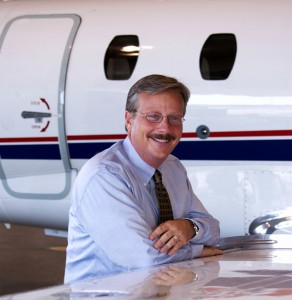
Jack Pelton, president and CEO of the Cessna Aircraft Company, is a firm believer in full-motion simulator training for the Mustang Citation, and as well for all of its jets.
“This is something we’re talking to underwriters about,” he said. “As the Safire Jet is meant for use by Part 135 operators for the air-taxi business, where professional pilots will fly the aircraft, jet training using full-motion simulators is extremely important.”
Brown said they won’t even discuss Safire or Adam at this point, because he hasn’t seen anything in the way of training; but he agreed to break his one-year-wait rule and to underwrite Eclipse.
“We might underwrite their high-hour pilots who have at least 2,500 hours, but we won’t take their low-hour, transition pilots,” he said. “Even 2,500-hour pilots will first have to pass the Eclipse training.”
Brown compared Cirrus’ single-engine, piston-powered plane to what it will be like for purchasers of the VLJ.
“Today, if you want insurance on a Cirrus, you better have 1,000 flight hours and an IFR rating, and you have to attend training at the UND,” he said. “Insurers set those standards for a Cirrus, because Cirrus changed the way we viewed performance. It was the first aircraft in that category to have an all-class cockpit with a PFD, MFD and side yoke, and for extra safety, a ballistic parachute. However, its speed was an issue; it went faster than other planes in its class.”
He added that before those training standards were established, too many low-hour pilots, flying “typical” pistons, had too many accidents or incidents. Pilot skill didn’t match that of the aircraft they were flying.
However, the thread binding all insurers together was the analogy between Cessna’s training prowess and Cirrus’ advanced technology. Insurers cited Cirrus aircraft as wonderful planes, but pilots flying that aircraft were to blame for previous accidents. If they had only had more flight hours, ratings and training, maybe they wouldn’t have had to pull that chute.
That analogy angers Alan Klapmeier, Cirrus’ founder, president and CEO.
“It’s very disappointing that the industry can’t accept, as a last resort, a pilot pulling the chute to save his or his passengers’ lives,” he said. “Pilots shouldn’t be ridiculed for being alive. I’m thinking about producing a single-engine jet, a ‘personal’ jet, but pilot training alone should never be enough.”
Thickey said because underwriters are afraid that pilots of the VLJ could easily have the same problems that Cirrus pilots had initially—low-hour pilots flying aircraft they didn’t understand fully—they plan on making sure it doesn’t happen again.
“We’re not the only insurance company that will be sending in-house pilot/engineers to OEMs to scrutinize their factory-based training” she said. “We are concerned. Although we’ve agreed to underwrite Eclipse, even though they don’t have a full-motion simulator, we’d still like them to have one in the future. We believe it’s the safest way to learn real-world aircraft characteristics, without the loss of limb or life.”
However, Eclipse’s Raburn says he doesn’t plan to offer full-motion simulator training.
“We feel we have a superior training program,” he said. “Each pilot/student will be required to have jet time in our Eclipse 500, which we believe is the best way for a pilot to learn how to fly the plane they will be type-rated in.”
Raburn, who is a highly rated pilot, said he’s aware that not everyone agrees with his idea of using an L-39 Albatross jet trainer, but he believes it will teach pilots the skills they need in case they get into an upset recovery situation. Thickey said Global likes the idea that they are doing something about upset recovery training, but she’s not sure about the two-seat, tandem L-39.
“It’s certainly better than nothing,” she said.
There are insurers, brokers and industry experts that question Eclipse’s training program, such as an AIG underwriter who said if you looked closer, their training is “smoke and mirrors.”
“The L-39 has nothing to do with making the Eclipse 500 Jet insurable. It’s a low-wing aircraft, which would be a good vehicle to practice loops in, but it has nothing to do with how twinjets feel and operate in upset recovery,” said the senior underwriter. “Additionally, Eclipse doesn’t specify that pilots must be ‘proficient’ in IFR or multiengine ratings; they only require that pilots have the ratings. FAA-approved jet flight schools such as FlightSafety, SimuFlite, SimCom or other schools recommend pilots take refresher courses before attending serious training.”
De Spain agreed, but added that UND has been great for Cirrus and other aircraft in that class, but not for jet training.
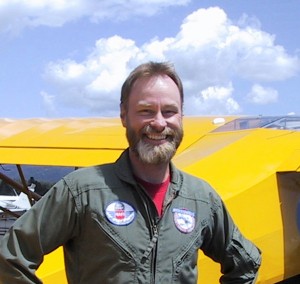
Rich Stowell, FAA safety counselor, master/CFI-A, and the president and CEO of the Aviation Learning Center at Santa Paula Airport, is an upset recovery and spin/stall expert; he says Eclipse’s training in that area is lacking.
“Eclipse’s altitude chamber sessions they plan on putting pilots into isn’t necessarily going to make the 500 more insurable either,” he said.
Rich Stowell, an FAA safety counselor and master/CFI-A who is CEO and president of the Aviation Learning Center at Santa Paula Airport (SZP), recommended that Eclipse teach “real” upset recovery training. He said the nearby FAA-approved Flight Research Training Center, a General Dynamics-owned corporation, was a good choice.
“This would provide a stark contrast between a legitimate approach to upset recovery training that is a two-day intensive course, inclusive of three hours with an in-flight modified Learjet versus Eclipse’s two 20-minute amusement rides in an L-39,” he said. “The irony is that Eclipse and this joint government-industry-initiative program, developed with NASA, are both located in New Mexico. I believe it’s a disservice to mask their in-house upset training as being anywhere near comprehensive or good enough.”
Stowell, who developed the three-phase, FAA-approved EMT Program, including unusual attitude spin recoveries and inverted/upright and upright/ inverted transitions, has successfully taught 24,800 spin/stalls to students worldwide.
“I’m not trying to pick on Eclipse, but this is very serious,” he said. “Do it right or don’t do it at all.”
Former FAA Administrator Jane Garvey highly recommended Stowell’s program and expertise. In an article, “Surviving the Worst,” she said, “Not only has he authored a comprehensive book and a video on the subject, but this was also the only course we found that included specific training on dealing with control surface failures and off-airport landings—just the sort of things GA pilots are likely to encounter.”
Johnson said he believes it’s going to be a real surprise when owner/operators realize they won’t be able to fly the Eclipse 500 alone.
“These new jet-rated pilots will end up paying for a qualified jet pilot to attend Eclipse’s type-rating program, to essentially baby-sit them until they’re qualified to fly alone as captain-in-command,” he said. “Vern has professed that the five-seat Eclipse jet will be used for air taxis; however, the training program, as it stands now, and the fact that numerous pilot/owners have put deposits down, is incongruous. If he actually refunds pilots who can’t cut the mustard, as he’s promised, he’ll be the first person in history to do that. Nevertheless, I do believe Eclipse is a well-designed aircraft.”
Raburn said he has warned pilots that having a commercial license would be beneficial, and it would improve their chances of insurability to get some time in the right seat of a jet. Hearing this makes any Part 121 pilot salivate, and Bill Strait is no exception.
Getting in on the action
Strait, who has 30 year’s experience as an airline transport pilot, also decided to enter the VLJ race, but as the founder of Palm Beach Airlines, which will contract with OEMs such as Eclipse and offer a mentor-pilot training program. He said hundreds of ATP pilots are available now to mentor low-hour pilots expecting to fly as captain-in-command in the VLJ.
“We believe that with all the VLJs coming to market, the drones of the twin-turboprops, such as a King 200, will be pushed out,” he said. “Pilots moving up from those types of aircraft are going to need our skills and expertise.”
Other opportunists of the VLJ, virtual unknowns in the name of charter, have surfaced as well. Massachusetts-based Linear Air is one of a handful of air taxi companies racing to gain name recognition in the market. Linear Air is one of the first companies in the U.S. to launch an air taxi business, but with a Cessna Caravan, until the jets are ready.
RSVPair.com, a free provider network that tracks Part 135 operations and trends, from website-based brokers to significant charter/management providers in the U.S., polled operators in a survey, asking them which VLJ they thought would best fit the needs of their clientele. As of August 9, 52 Part 135 charter members had voted with 22 votes for the Mustang at 42.3 percent, 21 votes for the Eclipse 500 at 40.4 percent, four votes for the Safire Jet at 7.7 percent, and surprisingly, only 9.6 percent was for the Adam 700, with five votes. The survey began July 20.
New single-engine jets on the rise
Peter Maurer, North American president of Diamond Jet Aircraft Industries, believes the unusual design of the five-place, single-engine D-JET will be very successful because it’s different.
“It’s not for the use of Part 135 operators; it’s really for the owner/pilot,” he said. “Still, it’s a jet, and solid training is required, which we will do.”
He added that he doubts an L-39 would be a consideration.
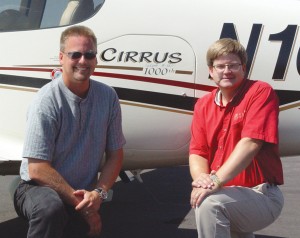
Alan and Dale Klapmeier, Cirrus Design cofounders and owners, who plan to launch a single-engine jet in the future, are leery of parachute naysayers.
“Contrary to reports circulating, we’re not considering the use of a parachute for the jet, because of the speeds involved with the aircraft,” he said. “We haven’t been able to find a parachute system to accommodate a commercial system. I commend Cirrus for using a chute, even though they’ve received a lot of bashing.”
He said the D-JET’s maximum ceiling of FL250 is for a very good reason as well.
“Everyone else is talking about FL410, but we know that most pilots won’t hit FL410,” he said. “It takes too long to climb or descend, which wastes a lot of time when it’s not really that important to fly at that altitude. I think it will be easier to insure, because it’s a single jet, and most VLJs at FL410 will have ATC conflict, because they can’t go as fast as the jetliners. They’ll be in their way.”
He added that he’s a firm believer in spin/stall accident prevention; in Canada, flight-schools still require pilots to undergo this before they’re allowed to solo.
“I think that because the FAA phased it out in the U.S., Canada stopped requiring it a couple of years ago, but flight schools are ignoring that,” he said. “Numerous pilots from the U.S. come over here to receive spin/stall training. In fact, during our Diamond Fest, our DA-20 flew for three straight days; pilots couldn’t get enough of spin/stall training. I would think for insurance it might make an underwriter look at a pilot who’s had spin/stall training as more insurable.”
Bob Bornhofen, president of Colorado-based Excel-Jet Limited, is a firm believer that his new single-engine, four-place Sport-Jet, which he said will fly by the end of December, will make the cut. Bornhofen is no stranger to the woes of designing a VLJ. He was the designer and creator of the five-place Maverick Leader, which he sold to Jim McCotter several years ago; it’s defunct now. He says the Sport-Jet will sell for under a million dollars; he originally planned to use a parachute recovery system, but later found out it wouldn’t accommodate the aircraft’s design.
“I do think pilot training is important,” he said. “However, I plan to provide in-flight training using the Sport-Jet. I haven’t gotten to the point where we can give more details about a circular-based training program, except to say we will have one. My goal is to build an efficient, safe and affordable jet, which I believe will be easier to insure than a twinjet.”
Insurance underwriters don’t agree that a single-engine jet is a better insurance risk; according to De Spain and Thickey, it’s a higher risk.
“It’s always been a myth that insuring a single-engine aircraft is a better insurance risk,” Thickey said. “However, we view a twinjet as being safer; we have statistics to prove that. It doesn’t matter if it’s a single-engine jet such as the Diamond D-Jet at FL250 or the Eclipse 500 twinjet flying to FL410. They all go fast; they’re equally dangerous to the inexperienced. Once the plane is available to the public, just like automakers, OEMs of planes won’t be responsible for who flies them. The FAA may certify them, but it’s the insurer who will be paying out claims, so it’s the insurer who will decide who is qualified to fly or not.”
The FAA
The FAA has certain criteria for new VLJs as well. Elizabeth Isham Cory, FAA deputy of public affairs in Great Lakes, said regardless of whether it’s a single-engine piston or a single-engine jet, they are all required to undergo spin testing.
“The only way to get out of spins is to meet the spin-resistance requirements or receive an equivalent level of safety for an alterative approach,” she said. “However, we’re encouraging all new single manufacturers to try the spin-resistance approach as Cirrus and Lancair have done under FAR Part 23. Spin resistance can only be accomplished by actual testing, though—not approved on a paper design.”
She said multiengine aircraft aren’t required to spin, unless they want approval in an acrobatic category.
This so-called rule concerns some single-engine jet manufacturers. They claim that a piston-powered plane can survive spin tests, but spinning a jet engine can kill you.
“I don’t think the FAA ever thought anyone would manufacture a single-engine jet, so now they have this rule, but it’s dangerous,” said Bornhofen. “Turbofan-powered aircraft tend to go off line in a spin; in other words, the engine can stop. If the FAA thinks a pilot has time to try and restart the engine for their FAR Part 23 rule, they need to go back and study this.”
Isham Cory said that because this was so new, they weren’t sure what would happen regarding single-engine jets, but that the FAA understands manufacturers’ concerns.
“We just don’t have any answers on this; we need to study it,” she said.
As for airspace congestion, Kathy Perfetti, from the FAA, said capacity is a challenge, but she doesn’t believe the addition of the VLJs to the airspace would require a regulatory change. However, like Isham Cory, she said the FAA doesn’t have all the answers at this point.
“We fully expect they will be flown under Part 135,” she said, speaking of the VLJs. However, she pointed out, since it has been some time since FAR Part 135 has been updated, changes are in the offing as FAA and industry goes through the Part 135 review process currently underway.











